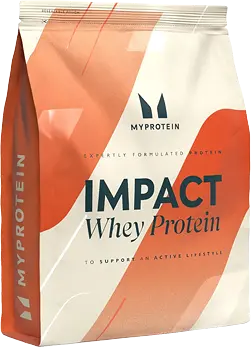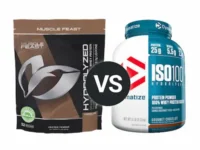Knowledge BaseYou're Questions Answered
Can you mix whey protein with almond milk?
Whey protein is a versatile and popular protein supplement derived from milk. It is commonly used to increase protein intake, support muscle growth, and aid in recovery after exercise. Almond milk, a plant-based milk alternative, is made from almonds and is often chosen for its mild flavor and nutritional profile. Mixing whey protein with almond milk is a common practice among those looking to enjoy a tasty and nutritious protein shake.
Benefits of Mixing Whey Protein with Almond Milk
-
Enhanced Flavor and Texture
Almond milk adds a smooth and creamy texture to protein shakes, which can enhance the overall taste experience. Its subtle nutty flavor pairs well with various whey protein flavors, such as chocolate, vanilla, and strawberry, making the shake more enjoyable1.
-
Nutritional Benefits
Almond milk is often lower in calories than dairy milk, making it a good choice for those looking to manage calorie intake. It is also naturally lactose-free, making it suitable for individuals with lactose intolerance. Additionally, many commercial almond milks are fortified with vitamins and minerals, such as calcium and vitamin D, which can complement the nutritional benefits of whey protein2.
-
Increased Protein Intake
Combining whey protein with almond milk can provide a convenient and effective way to boost daily protein intake. This is particularly beneficial for individuals who have higher protein requirements, such as athletes or those engaging in regular physical activity. The added protein from whey can help support muscle repair, growth, and overall recovery3.
Considerations
-
Choice of Almond Milk
When choosing almond milk, it is important to consider the type and brand. Some almond milks contain added sugars and flavors, which can increase calorie and carbohydrate content. Opting for unsweetened almond milk can help minimize added sugars while still enjoying the creamy texture and mild flavor.
-
Allergies and Dietary Restrictions
While almond milk is a great dairy-free alternative, it may not be suitable for individuals with nut allergies. In such cases, other plant-based milks, such as oat, soy, or rice milk, can be used as alternatives.
-
Blending and Mixing
To ensure a smooth and well-mixed shake, it is recommended to use a blender or a shaker bottle. Adding the whey protein powder to the almond milk gradually while blending can help prevent clumping and ensure a consistent texture.
- Pal, S., & Ellis, V. (2010). The chronic effects of whey proteins on blood pressure, vascular function, and inflammatory markers in overweight individuals. Obesity, 18(7), 1354-1359.
- Maguire, J. L., Lebovic, G., Kandasamy, S., & Khovratovich, M. (2013). The role of fortified plant-based milk in the dietary intake of vitamin D, calcium, and protein in young children. Pediatrics, 131(4), e1018-e1024.
- Mortensen, L. S., Hartvigsen, M. L., Brader, L. J., Astrup, A., & Raben, A. (2012). Differential effects of protein quality on postprandial lipemia and incretin responses in adults with type 2 diabetes: a randomized controlled trial. American Journal of Clinical Nutrition, 95(4), 662-671.
Related Questions

Your Answer
We are a participant in the Amazon Services LLC Associates Program, an affiliate advertising program designed to provide a means for us to earn fees by linking to Amazon.com and affiliated sites.






